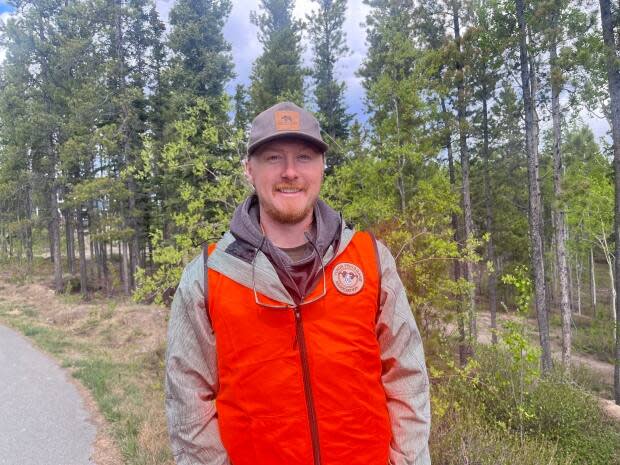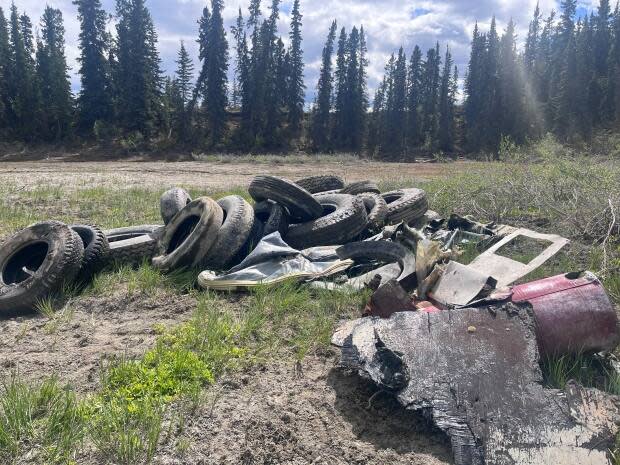An old dump is feeding tires into a Whitehorse creek — but there's a team hauling them out

You can hear the word "tire" in McIntyre Creek's English name.
But a team of volunteers wants that connection to be made in name alone. Spearheaded by the Yukon Fish and Wildlife Management Board, the group was working this week to remove old tires that are making their way into the Whitehorse-area waterway.
"The tires tend to slough out or erode out of an old dump site, which abuts the creek," said Steve Hossack, who works for the management board. He described the clean up effort as a passion project of his.
"They obviously continue to pop out of the ground and that's just part of the erosion of the site," he explained. "This has been going on for at least a decade to my knowledge, and a few hundred tires have come out."

The tires come in all shapes and sizes — and various stages of decomposition.
Hossack said some barely have a rind left to them, while others look intact and almost new. Some are easy to grab, and others are buried in the muck — making it a challenge to lift them out of the sticky mud.
Significant wildlife corridor
The Southern Tutchone name for McIntyre Creek is Chasàn Chùa.
The Yukon Chapter of the Canadian Parks and Wilderness Society says the creek passes through Whitehorse and the traditional territories of the Ta'an Kwäch'än Council and Kwanlin Dün First Nation, and is home to many species of plants, invertebrates and mammals — some of them rare or at risk.
Bruce Wilson, a land steward officer for the Kwanlin Dün First Nation, says McIntyre Creek has salmon in it. He suspects it is picking up other pollutants, like garbage and brake pad residue, because it flows underneath Highway 2 toward the Yukon River.

"It's really important that we do what we can to keep this creek as clean as we possibly can to help the salmon," he said.
Hossack wonders if the pollution could be why salmon haven't been using the site to spawn and rear their young in a number of years, but he isn't sure. He is sure, however, that the creek is a "significant" wildlife corridor for animals moving from the urban Whistle Bend area to Fish Creek.
"You'll go down into this creek bottom here and see moose tracks and beaver tracks and other, you know, small animals," he said. Some of the other wildlife that use the area, he said, are songbirds, eagles and ravens.
"There's a lot of wildlife in the area and so yeah, we're basically just out here to try and do them a favour and clean it up as best we can," said Hossack.
Logistical challenges
The cleanup faces some logistical hurdles though.
Hossack timed it right this year — getting a team of roughly a dozen volunteers into the area after the ice on the river melted and before the water level got too high.

But it isn't easy to lift some of the heavy tires out of the muck, nor is it easy to get them altogether removed from the area. Hossack said the crew had gathered about 40 tires by the time he spoke to CBC News. He was hoping to have a local helicopter company fly them out in a cargo net, but he was still ironing out those details on Wednesday.
"I think that's going to be a future thing," he said. "If we can get them all up into high ground then we can leave it for, you know, a few days and come back and do the extract on another day."

